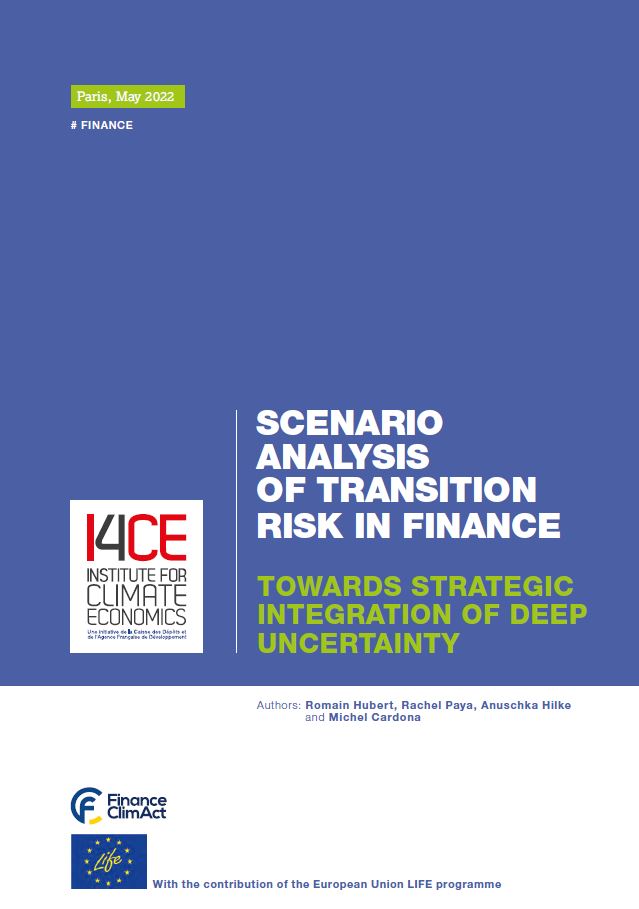Scenario analysis of transition risk in finance – Towards strategic integration of deep uncertainty
The restructuring of the economy towards a low-carbon system will lead to develop activities that are aligned with the needs of a net zero economy, to restructure others in order to make them compatible with these needs and to stop harmful activities. The financial sector needs to anticipate these dynamics to address strategic risks and seize opportunities for their financial service business. However, financial actors are not inherently equipped to factor in this transition risk characterized by the complexity and multiplicity of potential transition pathway, as well as the impossibility to define an objective probability distribution of future outcomes. This characteristic of transition risk is called “deep uncertainty”.
The need to clarify how financial actors should use scenario analysis for a strategic integration of deep uncertainty
As recommended by the TCFD, scenario analysis can be particularly useful to ensure proper strategic integration of the deep uncertainty around the low-carbon transition. Mainly through disclosure requirements, regulators have invited financial actors to implement the scenario analysis process and to account for its strategic consequences.
However, financial actors have disclosed patchy information on scenario analysis and its strategic use so far. They have often relied on third-party methodologies that can lack transparency and that face a range of common challenges.
While financial actors and regulators are gaining experience with scenario analysis, they may face difficulties identifying what should be done to ensure the strategic relevance of the exercise – including the appropriate integration of deep uncertainty.
A report defining good principles of scenario analysis for a strategic integration of deep uncertainty
I4CE has defined a range of theoretical good principles that should be implemented. They were defined based on: the review of analytical frameworks used by a range of service providers; insights from strategic foresight approaches applied in industrial contexts; research on decision-making under deep uncertainty.
As illustrated below, the principles are categorized according to six building blocks focusing on major aspects of a scenario analysis process that are necessary for a strategic integration of deep uncertainty. They are neither exhaustive nor representative of the chronological order of the steps of the process in practice.
The full report summarizes the principles as a checklist (see the short version in the executive summary and the complete version in the core report). The checklist covers not only technical aspects, but also organizational aspects to ensure the appropriate mobilization of the teams.
The checklist can be used for instance by financial actors to improve their internal approach and challenge their service providers, and by financial regulators and supervisors to clarify their expectations, through disclosure requirements and the review of internal risk management practices.
Click on this button to see the image
Several stakeholders should be mobilized to foster the effective implementation of the good principles
The methodological approaches to scenario analysis in finance comprise emerging relevant practices. However, as illustrated below, they also face several common challenges. The full report makes recommendations to address these challenges and stimulate the generalization of already relevant practices. While financial regulators and supervisors should guide scenario analysis implementation, a broader range of stakeholders should also collaborate to address the needs.
Click on this button to see the image
This report is part of the Finance ClimAct project and was produced with the contribution of the European Union LIFE programme. This work reflects only the views of I4CE – Institute for Climate Economics. Other members of the Finance ClimAct Consortium and the European Commission are not responsible for any use that may be made of the information it contains.


With the contribution of the European Union LIFE programme


